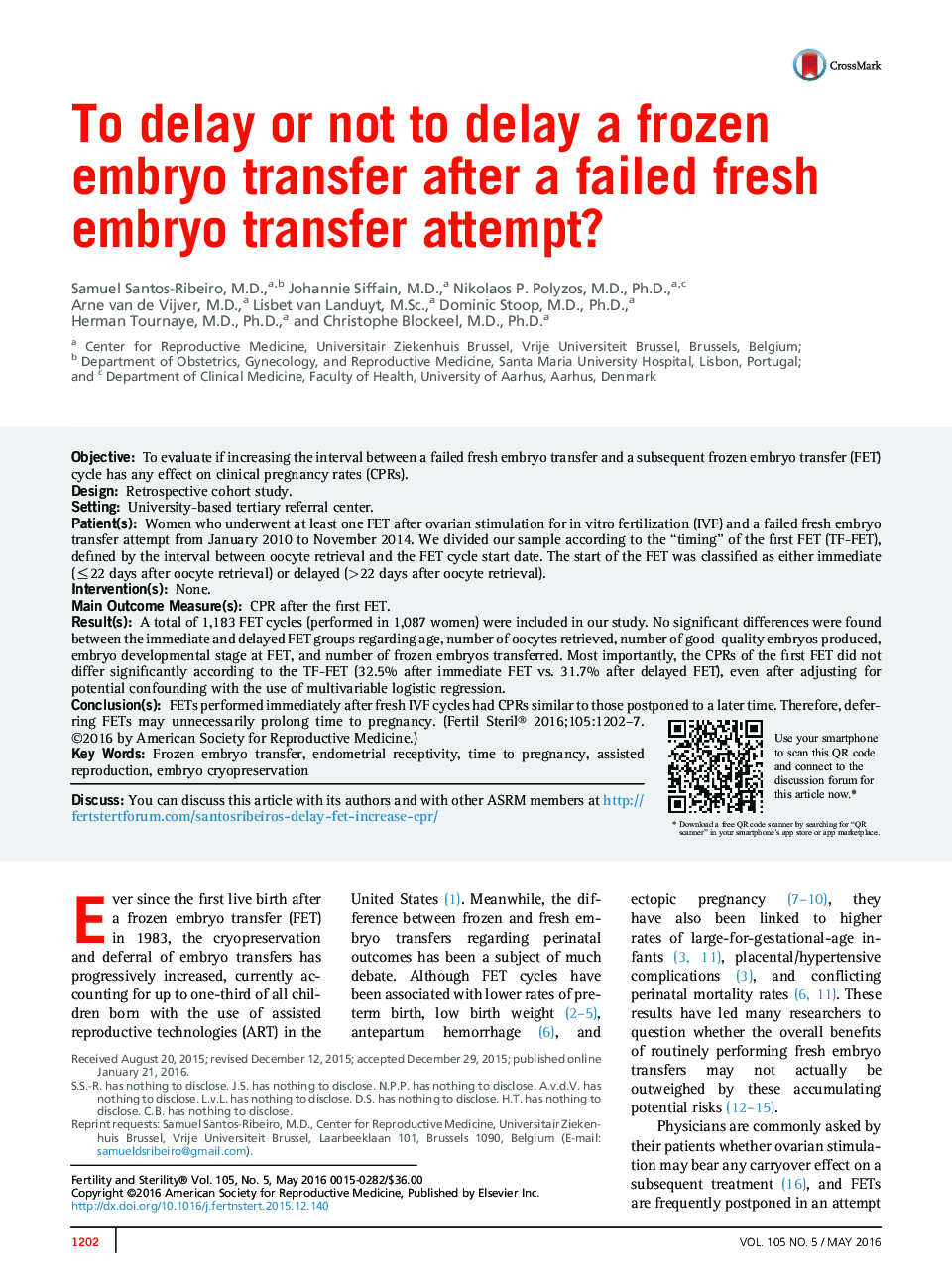| Article ID | Journal | Published Year | Pages | File Type |
|---|---|---|---|---|
| 6178459 | Fertility and Sterility | 2016 | 7 Pages |
ObjectiveTo evaluate if increasing the interval between a failed fresh embryo transfer and a subsequent frozen embryo transfer (FET) cycle has any effect on clinical pregnancy rates (CPRs).DesignRetrospective cohort study.SettingUniversity-based tertiary referral center.Patient(s)Women who underwent at least one FET after ovarian stimulation for in vitro fertilization (IVF) and a failed fresh embryo transfer attempt from January 2010 to November 2014. We divided our sample according to the “timing” of the first FET (TF-FET), defined by the interval between oocyte retrieval and the FET cycle start date. The start of the FET was classified as either immediate (â¤22 days after oocyte retrieval) or delayed (>22 days after oocyte retrieval).Intervention(s)None.Main Outcome Measure(s)CPR after the first FET.Result(s)A total of 1,183 FET cycles (performed in 1,087 women) were included in our study. No significant differences were found between the immediate and delayed FET groups regarding age, number of oocytes retrieved, number of good-quality embryos produced, embryo developmental stage at FET, and number of frozen embryos transferred. Most importantly, the CPRs of the first FET did not differ significantly according to the TF-FET (32.5% after immediate FET vs. 31.7% after delayed FET), even after adjusting for potential confounding with the use of multivariable logistic regression.Conclusion(s)FETs performed immediately after fresh IVF cycles had CPRs similar to those postponed to a later time. Therefore, deferring FETs may unnecessarily prolong time to pregnancy.
